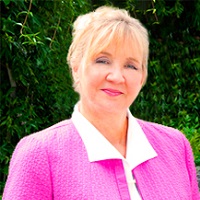 By Lindy Benton, President, MEA|NEA|TWSG
By Lindy Benton, President, MEA|NEA|TWSG
Twitter: @MEA_NEAfast
Single platform healthcare communications can now be the new normal for hospitals. While electronic health records are a good fit for managing data, they often exclude factors pertaining to the administrative and financial operations of the hospital. EHRs are also limited when it comes to communication, typically managing interactions with patients but not those with payers, physicians and other parties.
Technology is now available to close these gaps in documentation for a complete view of patient information exchanged across the continuum of care. By bringing together a number of various, seemingly disparate processes, all communication can be located in one place while interfacing with systems like EHRs. The result is a single integrated platform for the secure exchange of health information and management of communication between providers, patients and payers.
A single access point for communication and health information helps resolve many workflow and care coordination challenges for hospitals. Communication-oriented inefficiencies can lead to a substantial productivity loss (we’ve seen losses of up to $900,000 per year for the typical hospital). Since hospitals invest countless resources at each point of the revenue cycle to obtain full and accurate reimbursement of services, the revenue cycle can easily be affected by factors such as poor communication systems and a lack of communication integrity.
Denials are among the most obvious pain points of the revenue cycle as hospitals work to manage their revenues against the potential pull back from payers on claims submitted. It’s also important to note that nearly two-thirds of errors leading to initial denials are traced back to errors originating in patient access departments related to issues associated with eligibility, authorization or demographic information.
Similarly, lack of proof of the agreed upon status that occurs between the payer and the facility can cost a hospital millions in retro denials. Without proof of the status – inpatient vs. outpatient or observation – the hospital is at risk of being denied for lack of medical necessity. Proof of the approved level of care is critical to receiving full and accurate reimbursement. And because many hospitals are now paid on a per case basis, proof of notification is also critical to reimbursement. Failures to notify may result in a 50 percent to 100 percent loss of the entire amount for the case.
Capturing all communication and placing everything in a searchable database can eliminate problems with mismatched authorizations, claim denials, misplaced records, patient out-of-pocket expenses and other issues that can add up to millions of dollars each year. With communication systems integrated, all relevant information is available when it’s needed.
With immediate access to proof of the hospital’s right to be paid, staff can quickly recover lost revenue. This reduces the hospital’s cost to collect by shortening the appeals process with payers. For the average hospital, cost to collect on claims represents 2.3 percent of net patient revenue. In fact, hospitals devote more than 25 percent of business office resources to reworking claims. For an organization with $300 million in net revenue, initially denied claims amount to $30 million in claims that require rework. Higher levels of rework lead to higher cost to collect and more days spent in in claims limbo.
Using the appropriate technology routinely means hospitals often can see a significant reduction in the number of claims denied upfront as payers become aware of their ability to provide proof to overturn denials. A central point of access for information supporting payment of claims also eliminates back-and-forth between the front end and the back end, reducing duplication and supporting efforts to quickly overturn denials.
Single platform communications systems help hospitals address other revenue cycle inhibitors as well. Lost physician orders, for example, are not only frustrating but can increase wait times for patients and create bottlenecks throughout the hospital. Both fax and electronic orders can be stored in a single location, searchable by patient and available enterprise-wide. Studies show that a single physician generates an average of $1.5 million a year in net revenue on behalf of his or her affiliated hospital, according to research by Merrit Hawkins. Losing even a portion of these referrals because of inefficient scheduling translates into lost revenue for providers. By eliminating roadblocks to scheduling, the hospital becomes more accessible to physicians, their offices and their referrals.
A single platform also supports patient encounters that occur during scheduling, registration and at discharge. Documented interactions are used as a reference for quality assurance, training and patient experience improvement. At registration, financial counseling discussions are recorded for support in communicating patient out-of-pocket estimates. At discharge, recorded instructions serve as an at-home reference for patients to improve compliance and reduce avoidable readmissions.
Each of these factors contributes significantly to improving a hospital’s revenue cycle. These challenges can be huge obstacles to overcome, not only from a financial standpoint, but also from a workflow and productivity perspective. Single platform communications systems can now be the new normal for the hospitals. By bringing together a number of these previous disparities, all communication can be located in one common place to support technologies, and perhaps more importantly, processes like revenue cycle management.
Integration means you can secure your protected health information, as well as seamlessly exchange and access that information; all of which leads to simplified management of communication between patients, providers and payers. And isn’t that the ultimate goal for all healthcare communications?
About the Author: Lindy Benton is president of MEA|NEA|TWSG, a provider of secure healthcare communications, HIPAA-compliant cloud storage solutions, electronic attachment and health information exchange solutions for hospitals and dental practices. MEA|NEA|TWSG serves more than one million providers in the US.
